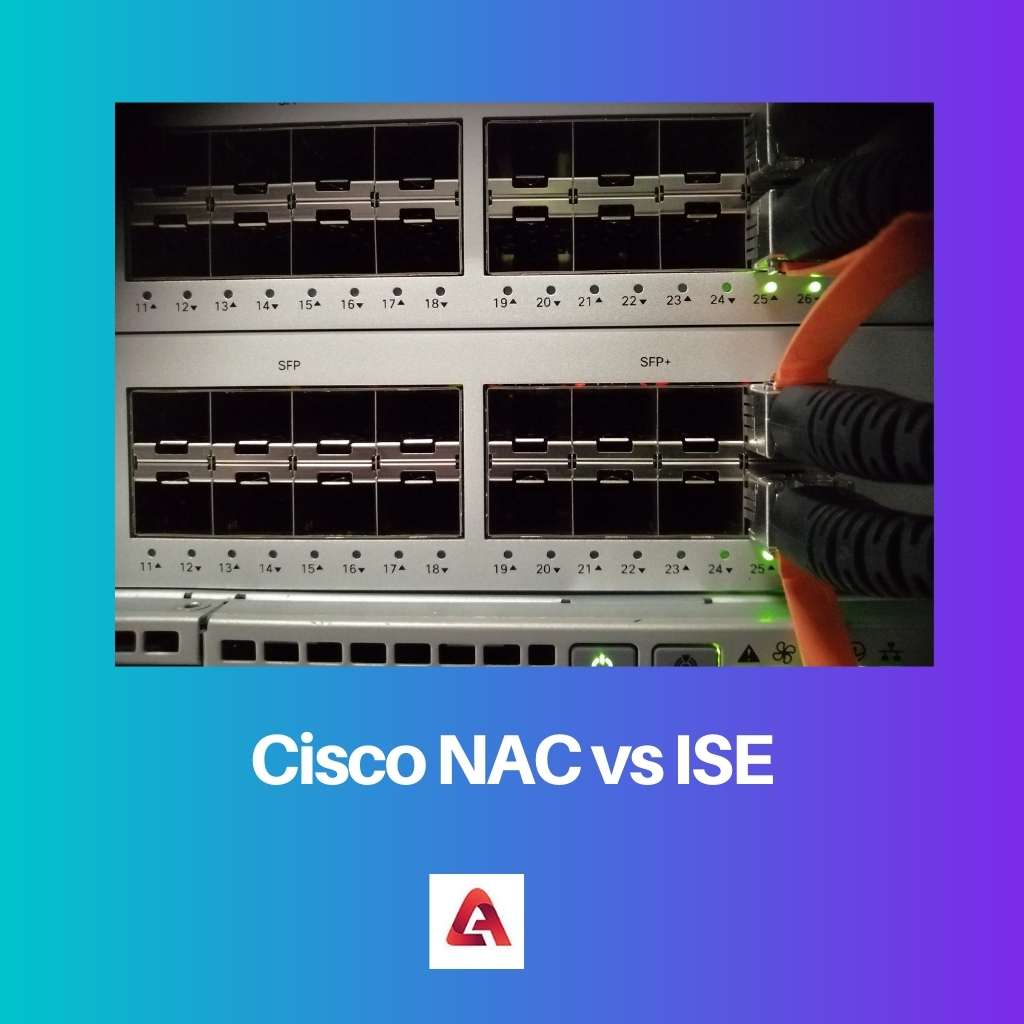NAC is a Cisco product used to identify and evaluate hosts that attempt to connect to your network (especially before they have access). ISE is an application that provides various features to manage and secure a wired or wireless network environment.
Cisco ISE solution comprises the Cisco Identity Services Engine and a set of servers and client programs. It can also “quarantine” any infected computers or devices via security policy enforcement.
Key Takeaways
- Cisco NAC provides network access control, while ISE offers a comprehensive security solution for wired, wireless, and VPN networks.
- ISE supports authentication methods, like 802.1X and MAB, whereas NAC focuses on port-based access control.
- ISE offers advanced features, such as BYOD, profiling, and guest services, not available in NAC.
Cisco NAC vs ISE
NAC ensures that only authorized devices are allowed access to a network by performing pre-admission security checks. ISE is a comprehensive network access control solution that combines authentication, authorization, and accounting (AAA) services to allow network administrators to control access to the network.

Cisco Network Admission Control (NAC) is a Cisco Systems solution used to control access to the network. This technology prevents unauthorized devices from connecting to a network while allowing authorized devices access.
The solution is intended to reduce the risk of security breaches. This method of limiting access helps increase a business’s security posture, protecting the integrity of sensitive data.
Cisco Identity Services Engine (ISE) is a new access-control platform that uses a consolidated policy approach to manage multiple Cisco devices and third-party security systems. It’s simple, powerful, and fast—with an intuitive user interface.
With Cisco ISE, you can automate the provisioning of network devices, assign policies to users and groups, define conditions for access control, and manage all aspects of the network from a single point of administration.
Comparison Table
| Parameters of Comparison | Cisco NAC | ISE |
|---|---|---|
| Full form | Cisco NAC stands for Cisco Network Admission Control (NAC). | ISE stands for Identity Services Engine (ISE). |
| Launch | Cisco NAC was first released on October 23, 2007, as Cisco NAC Guest Server, Release 1.0.0. | ISE was first released on May 27, 2017, as Cisco Identity Services Engine, Release 1.0. |
| Service | Cisco NAC services can be beneficial in automatically identifying devices as they connect to the network and granting access without jeopardizing security. | ISE services include network access, profiler, posture, security group access, and monitoring. |
| Node | Cisco NAC does not contain a node. | ISE contains nodes. |
| System requirements | The Cisco NAC Guest Server can be integrated with the Cisco NAC Appliance Clean Access Manager through its API or Cisco Wireless LAN controllers through the RADIUS protocol. | Cisco ISE on VMware Version 8 (default) for ESXi 5. x (5.1 U2 minimum). |
| Hardware | The Cisco NAC Guest Server is a stand-alone hardware appliance that runs on NAC-3415 \sNAC-3315. | Cisco ISE software is pre-installed with your appliance or image. Cisco ISE Release 3.1 is supported by Cisco SNS-3595-K9 (big) and Cisco SNS-3615-K9 (small) switches (small). |
What is Cisco NAC?
Cisco Network Admission Control (NAC) is a solution for enforcing security policy compliance on wired and wireless devices. It works by verifying the configuration of the end device, and then allowing access only if the device passes inspection.
Once configured, NAC gives administrators visibility into all devices connecting to the corporate network and helps ensure that only permitted devices can access the network.
It is a software solution developed by Cisco that identifies and authenticates any device before it becomes a part of the network. This technology aims to secure the network against unauthorized access and maintain compliance policies.
NAC uses an agent installed on each client computer that collects security-related information, such as operating system and patch information, before allowing access to the network.
NAC also monitors clients’ actions while they’re connected to the network, helping ensure they comply with your security policies.
What is ISE?
Cisco Identity Services Engine (ISE) is a cloud-based network access control solution that combines multiple security functions, including authentication, posture assessment, authorization, and auditing, in a single policy platform.
Cisco ISE can be deployed on a physical or virtual appliance, and it is software that may be downloaded and installed on your servers or hosted in the cloud.
ISE enables you to unify your network’s management of wired, wireless, virtual, and mobile devices. It also provides policy enforcement for all business-class devices, regardless of their operating system or manufacturer.
ISE provides adaptive access to resources by applying security policies based on device context and identity attributes associated with users.
The Cisco ISE Policy Manager allows you to define network access policies with conditions based on identity attributes such as user group membership, device profile, and more.
When end users connect to the network from wired or wireless locations, Cisco ISE uses authentication services to verify the validity of their credentials before granting them access to network resources.
Cisco ISE is a policy-based, per-user authentication solution that provides robust authentication services without compromising user experience or security policies. It gives all user authentication services within the enterprise network boundary.
Main Differences Between Cisco NAC and ISE
- Cisco NAC stands for Cisco Network Admission Control (NAC), whereas ISE stands for Identity Services Engine (ISE).
- Cisco NAC does not contain nodes, while ISE does contain nodes.
- Cisco NAC handles network admission control, while ISE manages security policy.
- Cisco NAC has four versions, while ISE has eleven versions.
- The Cisco NAC Guest Server is a stand-alone hardware appliance that runs on NAC-3415 \sNAC-3315. And Cisco ISE software is pre-installed with your device or image. Cisco ISE Release 3.1 is supported by Cisco SNS-3595-K9 (big) and Cisco SNS-3615-K9 (small) switches (small).



